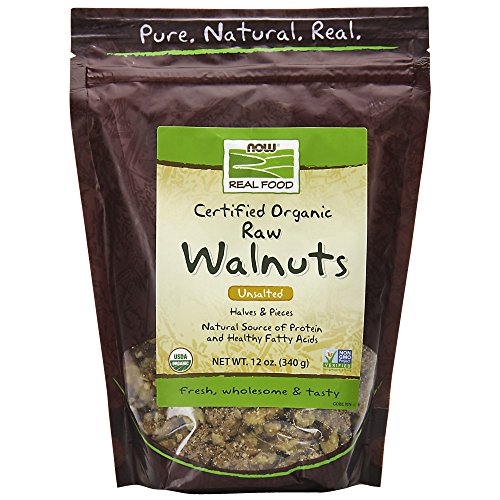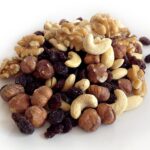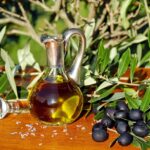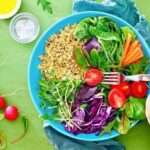Raw
What is the Nutrition in Raw Walnut Pieces?

Incorporating raw walnut pieces into your diet can provide numerous health benefits such as promoting heart health, improving brain function, and supporting digestion.
Walnuts are an excellent source of protein, dietary fiber and healthy fats. Furthermore, walnuts contain numerous antioxidants which may help combat free radicals and reduce inflammation.
Nutrient (per 1 ounce, or 28 grams) Raw Walnuts Calories 185 Fat 18 g Saturated fat 1.7 g Carbohydrates 4 g Fiber 2 g Protein 4 g Omega-3 fatty acids 2.6 g Vitamin E 1% DV Magnesium 11% DV Phosphorus 9% DV Copper 8% DV Manganese 11% DV
Note that these values are approximate and may vary depending on the specific type of walnuts. Raw walnuts are a good source of healthy fats, including omega-3 fatty acids, which can help improve heart health and reduce inflammation. They are also a good source of fiber and important micronutrients such as magnesium, phosphorus, and copper. Raw walnuts can be enjoyed as a snack, added to salads or trail mixes, or used in baking and other recipes. It is important to consume walnuts in moderation, however, as they are high in calories and fat.
They Are a Good Source of Protein
Walnut pieces are an excellent source of protein, dietary fiber, fats and Omega 3 fatty acids. Plus they boast a comprehensive variety of vitamins and minerals. Furthermore, walnut pieces contain antioxidants that may reduce your heart disease and cancer risk.
They contain Vitamin E, an important anti-inflammatory that keeps skin healthy. Furthermore, they have a high level of biotin which strengthens hair and encourages its growth.
Raw walnuts can be eaten plain or combined with other ingredients for an array of treats. Try adding them to baked goods, oatmeal, yogurt or smoothies – they make for a delicious snack and add natural sweetness to meals.
Raw walnuts can be purchased in bulk at most grocery or health food stores. Having a supply on hand makes it simple to incorporate them into your meals throughout the day.
Maintain the freshness of your walnuts by keeping them in a cool location, according to Michigan State University Extension. Warm temperatures can cause the beneficial fats in walnuts to go rancid, so keeping them chilled helps maintain their freshness.
One ounce (14 halves) of English walnuts provides 185 calories, 18 grams of fat (including 2 grams saturated fat), 4 grams protein and 2 grams fiber. They’re also an excellent source of copper, manganese magnesium and phosphorus.
Walnuts contain alpha-linolenic acid, an omega 3 fatty acid not found in fish. However, this type of omega 3 may not be as bioavailable as DHA and EPA from seafood sources.
Accordingly, it is recommended to combine walnuts with other sources of omega-3 fatty acids in order to maximize the benefits from this nutrient.
It is best to limit your walnut consumption at once. Experts suggest no more than seven or eight nuts per day in order to get all the beneficial nutrients these nuts offer.
Walnuts are an excellent source of calcium, iron and potassium. Furthermore, their fats contain monounsaturated and polyunsaturated fats which may benefit your heart health. Furthermore, walnuts supply Vitamin B6 and thiamin, essential nutrients for brain and nervous system proper functioning.
They Are a Good Source of Dietary Fiber
Walnut pieces are not only a great source of protein and healthy fats, but they’re also an excellent source of dietary fiber. This is due to the abundance of soluble fiber found within them – which has been known to lower cholesterol and blood glucose levels.
Consuming enough fiber is important for your health. According to the US Dietary Guidelines, adults should aim for a daily intake of 25 grams for women and 38 grams for men; however, many Americans fail to meet these recommendations.
Increase your dietary fiber intake by eating more fruits, vegetables and whole grains. Furthermore, opt for high-fiber snacks throughout the day.
A high-fiber diet can aid in weight loss and enhance your health. Studies have linked fiber to a reduced risk of heart disease and cancer. Furthermore, it promotes gastrointestinal regularity while decreasing the likelihood of diverticular disease – a condition involving small pouches in your colon (Mayo Clinic, 2015).
Some food products contain added fiber to help people meet their daily fiber requirements. Examples of such items include cereal, granola bars, yogurt and ice cream.
Soluble dietary fibers can be found in apples, oats, legumes and fruit. They help slow food passage through your digestive tract and increase fecal bulk – which could reduce constipation risk.
Walnuts are an excellent source of alpha-linolenic acid (ALA), the plant-based omega 3 fatty acid. Furthermore, walnuts contain vitamin E which helps protect your cells from oxidative stress.
Studies have identified numerous health benefits of dietary fiber, such as increased feelings of fullness, less bloating and improved digestion. Furthermore, studies have linked an abundant diet with lower risks of diabetes, heart disease and certain cancers.
Insoluble dietary fiber can be found in nuts, seeds, beans and some vegetables. It primarily takes the form of cellulose, hemicellulose, lignin, mucilage and pectin.
Soluble dietary fiber can be mixed with water to form a gel that absorbs liquid in the intestine, making it easier to pass stool.
Adopting fiber into your diet is simple, but you may need to add more water to your meals or snacks in order to get the recommended amount. For instance, try drinking a glass of fruit juice and a cup of water before eating a meal that contains lots of fiber; this helps the fiber absorb liquid.
They Are a Good Source of Healthy Fats
Walnut pieces are a nutrient-rich food that can be enjoyed on their own or in many recipes. Furthermore, these nuts provide an abundance of omega-3 fatty acids, which may aid weight management and lower the risk for heart disease and cancer.
Protein bars, dietary fiber and healthy fats are packed full of benefits for your wellbeing. Plus they’re low in calories and packed with essential vitamins and minerals.
Walnuts also contain magnesium and phosphorus, essential minerals for cell and muscle function as well as heart health.
Walnuts also provide a healthy source of potassium and manganese, essential minerals that support strong bones and teeth. Furthermore, these essential minerals support a healthy nervous system as well as metabolism.
Walnuts not only supply essential minerals, but they are a good source of antioxidants and vitamin E as well. Furthermore, the fat found in walnuts has been classified as “healthy” due to its monounsaturated and polyunsaturated fatty acids content.
These fats have been known to lower bad cholesterol levels and increase good cholesterol, helping protect against heart disease. Furthermore, they act as anti-inflammatory agents and have a beneficial effect on blood pressure.
According to a study published in the Journal of the American Heart Association, adding walnuts to your diet can lower systolic blood pressure and total cholesterol. Furthermore, researchers discovered that eating nuts reduces inflammation levels within your body.
One ounce of raw walnuts provides 196 calories and is an excellent source of nutrition. They also contain healthy polyunsaturated fats as well as Omega 3 fatty acids which have been known to lower cholesterol levels.
They provide a good source of calcium and phosphorus. Furthermore, they contain iron and manganese.
It’s essential to remember that eating too many walnuts can lead to weight gain, so only consume a small portion per day.
Walnuts are an excellent source of copper and manganese, two essential nutrients for brain and eye development. Furthermore, they supply vitamin B6 as well as zinc.
They are a good source of Vitamin E
Raw walnut pieces are an excellent source of protein, fiber and essential vitamins and minerals that can be added to salads, casseroles and breakfast foods. Furthermore, they can also be used as an ingredient in desserts and other baked goods for extra nutrition.
Walnuts are an excellent source of Vitamin E, an antioxidant which shields the body against free radical damage. Furthermore, they contain phytonutrients which have been demonstrated to aid in inflammation reduction.
While most people get enough Vitamin E from their food intake, if you feel you may need to supplement with a supplement. When selecting a supplement, make sure it uses high-quality ingredients and is supported by scientific research.
Vitamin E can be found in a variety of food sources, such as vegetables, fruits, nuts and seeds, avocados, vegetable oils, wheat germ and fortified cereals. A single serving of raw walnuts provides 1.6 milligrams – half the daily recommended intake – while eating spinach provides another two milligrams.
Sunflower seeds are an excellent source of vitamin E. In fact, just one ounce of sunflower seeds provides 7.4 milligrams – more than half your recommended daily intake!
High-quality sources of Vitamin E include red bell peppers, pumpkin and canola oil. Furthermore, dark leafy greens like spinach or kale are excellent sources of this nutrient.
Walnuts, in addition to their healthy fat content, contain polyphenols – antioxidants and anti-inflammatory compounds that may prevent cholesterol oxidation that has been linked with cardiovascular disease and cancer. These polyphenols also aid in protecting against inflammation caused by cardiovascular disease or cancer.
These nutrients have also been known to reduce the risk of diabetes, improve insulin resistance and slow down aging. Furthermore, they could have beneficial effects on both gastrointestinal health and cognitive functioning.
To maximize the nutritional benefits of fruits, vegetables and whole grains, it is essential to eat a balanced diet with plenty of fruit, veggies and whole grains. You could also incorporate more plant-based proteins like beans or lentils into your meals; this will increase absorption of essential vitamins, minerals and antioxidants while decreasing caloric intake.
Ilana has been a vegan for over 10 years. She originally made the switch for health reasons, but soon found herself becoming more and more passionate about the ethical and environmental implications of a vegan lifestyle. Ilana is the author of The Graceful Kitchen, a blog all about veganism. She loves to cook up delicious and nutritious vegan meals, and share her recipes with others who are interested in leading a cruelty-free life. Ilana is also a strong advocate for using whole foods as the foundation of a healthy diet, and believes that going vegan is one of the best ways to achieve this.
Raw
How to Find Nutrition Value of Raw Meat I Purchase in Market
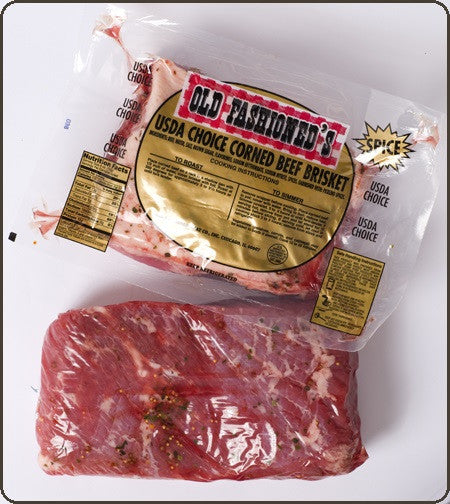
1. Look at the label
Labels on meats and poultry typically display the nutritional information based on the raw weight, unless specified otherwise. When meat is cooked, it usually loses about 25% of its weight, meaning a 4 oz label corresponds to roughly 3 oz after cooking. To accurately calculate the protein, fat, and calorie content per serving, divide this adjusted cooked weight by the number of portions you plan to eat. This simple approach encourages healthier eating habits!
2. Check the website
Nutritionally speaking, raw meat does not come with a set nutritional value. To determine its true nutritional worth, read the ingredients and nutrition labels carefully – something you should do for any food item, but especially meat. As there is often misinformation out there, do your due diligence before purchasing anything; for instance, check the website of the vendor to ensure they use traceable and ethically sourced ingredients or ask directly if they have any nutritional facts available.
3. Ask the seller
When shopping for a nutritious serving of meat, there are a few things to consider. First and foremost, select your cut carefully from sustainable sources like pastured or grass fed animals. If unsure where to begin with your shopping list, ask your favorite butcher for their recommendations based on individual dietary needs and lifestyle. Additionally, pay close attention to the quality of the meat such as its moisture content, texture and smell before purchasing.
4. Check the packaging
When purchasing raw meat, inspecting its packaging for firmness and no tears or holes is essential. It should feel cold to touch and have no odor. A red liquid at the bottom may seem unappetizing but this is actually myoglobin – a protein responsible for giving meat its color. This also keeps food fresh by creating an environment free from bacteria-filled environments.

You may notice absorbent pads underneath many packaged meat products; these protect meat from getting contaminated by liquids trapped inside their packaging; therefore, checking with recycling facilities before discarding these pads is recommended.
Aurelia is the Editor-in-Chief of The Graceful Kitchen, a vegan lifestyle blog that focuses on delicious, nutritious, and ethical eating. A lifelong vegan, Aurelia is passionate about sharing her love of plant-based cuisine with others. She is a regular contributor to several online and print publications, and has been interviewed by major news outlets about the benefits of a vegan diet. In her free time, Aurelia enjoys cooking, hiking, and spending time with her cats.
Raw
How to Make a Raw Nutrition Bar at Home
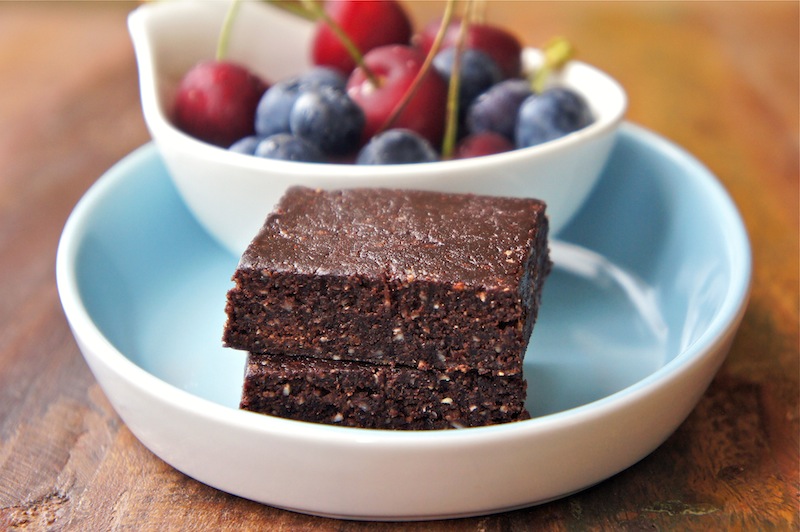
Raw energy bars are a great choice for a healthy and delicious snack on the go. Here is a simple recipe for making your own at home:
Ingredients:
- 1 cup almonds
- 1 cup dates, pitted
- 1/2 cup unsweetened shredded coconut
- 1/4 cup chia seeds
- 2 tablespoons raw honey
- 1 tablespoon coconut oil
- 1 teaspoon vanilla extract
- Pinch of sea salt
Instructions:
- Place the almonds in a food processor and pulse until they are roughly chopped.
- Add the pitted dates, shredded coconut, chia seeds, honey, coconut oil, vanilla extract, and sea salt to the food processor.
- Pulse the mixture until it starts to come together and form a sticky dough.
- Line an 8×8 inch baking dish with parchment paper.
- Transfer the mixture to the baking dish and press it down firmly with your hands.
- Chill the mixture in the refrigerator for at least 30 minutes to set.
- Once the mixture has set, remove it from the baking dish and cut it into bars.
- Store the raw nutrition bars in an airtight container in the refrigerator for up to 2 weeks.
You can also customize this recipe by adding in other ingredients such as dried fruits, nuts, or protein powder to create a variety of different flavors. These bars are perfect for a quick breakfast, snack or post-workout fuel. Enjoy!
If you’re an athlete or simply want to maximize the nutritional value of your food, a raw nutrition bar is an ideal option. These bars are nutrient-rich and packed with fibre, protein, and healthy fats for increased energy levels and sustained energy throughout the day.
These no-bake energy bars are simple to make and customizable to your personal taste. Simply add fruit, oats, nuts/seeds or other mix-ins for the perfect bar!
Ingredients
Raw nutrition bars are an ideal way to get your daily nutrients without adding extra calories. They’re especially ideal for athletes who require a quick snack between meals.
The great news is that you can easily make these delicious treats yourself at home. All you need are some basic ingredients and some time to mix them up.
One of the key ingredients you will need for a homemade raw nutrition bar is dates. Dates provide healthy sugar and antioxidants while being an excellent source of fiber that may help lower cholesterol levels.

Coconut oil is another important ingredient, providing healthy fats. Not only that, but it may help prevent heart disease and stroke as well.
Other ingredients you can include in your raw nutrition bars are oats, peanut butter, cocoa powder, protein powder and natural honey or maple syrup. Doing so will guarantee you get all the important vitamins, minerals and fibers from your food intake.
Add your favourite adaptogenic powders, like ashwagandha or ginseng, to boost the nutritional value of these bars. Furthermore, adding ground flax seed will increase their fiber content significantly.
Once all ingredients are prepped, simply blend them together until you achieve a dough-like texture. Press this mixture into a pan and chill until firm.
These bars are simple to make and a nutritious addition to any healthy diet. They can be eaten as breakfast, midmorning snack or meal replacement – perfect for athletes who need something quick between workouts.
Warrior RAW Protein Bar is an irresistibly tasty and nutritious protein bar that provides all essential amino acids. It’s suitable for vegans and gluten intolerant individuals alike, providing a convenient source of energy that can be taken as pre-workout, emergency energy booster, or travel food.
Preparation
Making a bar that lives up to its promise as an indulgent snack requires selecting the correct ingredients. Key components that go into bar formulation include protein source, sweetener, fiber source, fats/oils/emulsifiers/vitamins/minerals/nutraceuticals and flavors.
Finding the ideal ingredient for a bar is no small feat. You may have to experiment with different amounts and types of components until you find your ideal balance. The ideal nutritional bars will have an optimal combination of quality proteins, healthy fats, nutritious carbohydrates and minimal amounts of sugar.
One popular type of nutrition bar is the whole food bar. These typically feature various fruits, nuts, seeds and other plant-based ingredients compressed into a bar form. One major advantage of these bars is that they tend to be lower in calories and fat than their processed counterparts – particularly helpful for those trying to shed some pounds!
If you’re looking to make your own raw energy bar at home, there are plenty of recipes online. The key is to first decide what flavor profile and then search the internet for inspiration.
There are plenty of options when it comes to creating your own bar with just a few key components. Some suggestions include pulse the ingredients in either a blender or food processor before mixing them together for an even smoother mix.
Before scooping or shaping the mixture into bars or small balls, let it rest for a few minutes. This allows the ingredients to air dry slightly and makes them easier to stick together. Once dry, you’re ready!
Mixing
Raw nutrition bars should contain key components like protein, healthy fats and low-glycemic carbohydrates. They’re also packed with essential vitamins, minerals, enzymes and phytonutrients – perfect for anyone on a Paleo, Primal, GAPS or SCD diet as well as those on low carb, raw or vegan diets; athletes; people with health challenges – you name it!
These bars are an affordable way to create homemade raw nutrition bars without breaking the bank. You can customize them with flavors you love and use a range of sweeteners such as fruits, honey and maple syrup. For even greater nutritional benefits, use multiple protein powders or combine them all for extra nutritional punch!
The initial step in making raw energy bars is to pulse together all dry ingredients. Then, add wet ingredients and pulse until a dough forms. Slowly add more water until your mixture forms an even ball that can easily be formed into bars. If your dough seems too crumbly for rolling into bars, add a small amount of coconut oil for more firmness or add ground flax seed or your favorite adaptogenic potion for additional nutritional benefit.
Storage
If you’re searching for a low-calorie, nutritious snack to munch on, raw nutrition bars are your perfect choice. You can even make extra to store in the freezer for later use – just remember to refrigerate them promptly after opening to prevent flavors from fading and keep them from becoming dry and stale. To ensure these bars stay in top condition over time, use quality food storage containers with lids to avoid mold growth. Best of all? They’re easy to transport in lunch bags or purses without sacrificing flavor or texture!
Hi, I’m Alexander. I’m a vegan of over 20 years, and I initially made the switch for health reasons. However, as time went on, I became more and more passionate about the ethical and environmental implications of leading a vegan lifestyle.
I am the author of The Graceful Kitchen, a vegan blog where I share recipes for delicious and nutritious vegan meals. As someone who is deeply committed to living a cruelty-free life, I am also a strong advocate for using whole foods as the foundation of a healthy diet – and believe that going vegan is one of the best ways to achieve this.
Raw
How is Biotin Bioavailability Affected by Raw Egg Consumption?
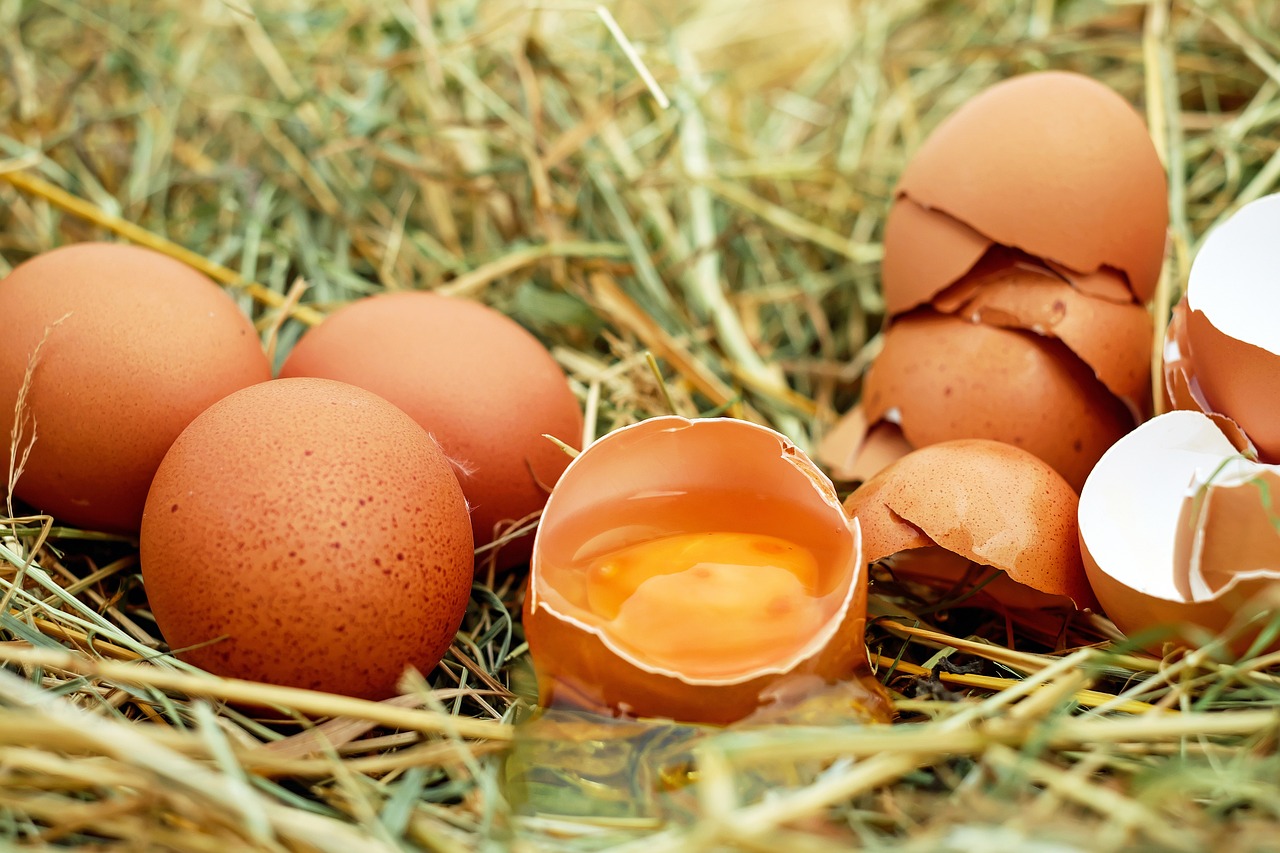
Biotin, a water-soluble B vitamin, is essential for synthesizing glucose and fatty acids. It is especially important for women during pregnancy.
Some people worry that eating raw eggs in large amounts daily could lead to biotin deficiency. However, this is unlikely the case since raw eggs do not contain the protein avidin which could prevent absorption of biotin.
Biotin is a water-soluble vitamin that plays an important role in energy metabolism and maintaining healthy hair, skin, and nails. Raw egg consumption has been found to interfere with biotin bioavailability due to the presence of avidin, a protein found in raw egg whites.
Avidin has a high affinity for biotin, which means that it can bind to biotin and prevent its absorption in the small intestine. When raw eggs are consumed, the avidin in the egg white can bind to biotin in the diet and prevent its absorption. This can lead to a deficiency of biotin over time.
However, cooking the egg denatures the avidin protein, rendering it unable to bind to biotin. This means that the bioavailability of biotin is not affected when eggs are cooked, and the body is able to absorb and utilize biotin from cooked eggs. Therefore, it is generally recommended to consume eggs that are fully cooked to ensure adequate biotin intake and prevent the risk of biotin deficiency.
It is important to note that biotin deficiency is rare in healthy individuals who consume a balanced diet. However, individuals who consume large amounts of raw egg whites or those who have a genetic disorder that affects biotin metabolism may be at risk for biotin deficiency. If you have concerns about your biotin intake, it is recommended to speak with a healthcare provider or a registered dietitian.
Biotin Is a Water-Soluble Vitamin
Biotin is a water-soluble vitamin essential for the body’s metabolism. It aids the body in using carbohydrates, fatty acids and amino acids as energy sources; additionally, it aids cells in synthesizing proteins.
Brewer’s yeast, cooked eggs, sardines, nuts (almonds, peanuts, pecans), and nut butters are all sources of naturally occurring selenium. You may also purchase it as a dietary supplement.
Biotin, which the body cannot synthesize on its own, must be obtained through food sources. It is essential in supporting proper immune function and brain development – particularly important for pregnant women and breastfeeding mothers.
Most people consume enough biotin, but some may be at risk for deficiency. These include those diagnosed with genetic disorders that prevent the body from producing the enzyme responsible for breaking down biotin, those who drink excessively or take certain medications which inhibit its absorption.
Raw egg consumption may lead to biotin deficiency due to a protein called avidin, which blocks its absorption by the body. However, once cooked, avidin is denatured and biotin can be readily absorbed by the body.
Biotin is typically ingested as food proteins that are broken down by digestive proteases and released to the small intestine where it absorbs into enterocytes. A high-affinity sodium/multivitamin cotransporter in these enterocytes transports biotin from the food protein into cell membrane, where it then travels into circulation before excreted unchanged through urine.
Studies have suggested that taking large doses of biotin may aid those living with diabetes in controlling their blood glucose levels. This is likely because biotin helps produce insulin, which regulates glucose concentrations.
Biotin may benefit hair, skin and nail health in several ways. Studies have demonstrated that it can increase the strength and growth of nails for women with brittle nails; further research indicates it could even aid those suffering from taste loss.
Biotin Deficiency Is Rare
Biotin, also known as vitamin B7, is a water-soluble B vitamin essential for producing glucose and fatty acids in your body. You can find it in foods like eggs, meat, fish, and vegetables.
Biotin deficiency is rare, but some individuals with certain genetic conditions that prevent the body from properly using it can become low in this vitamin. These include holocarboxylase synthetase deficiency (also called multiple carboxylase deficiency), biotinidase deficiency, and the inability to transport biotin into cells.
Patients with these disorders should receive lifelong biotin supplementation to maintain healthy levels of this essential vitamin. Untreated, the condition can lead to serious symptoms such as hearing loss, blurred vision, and learning difficulties if not caught and treated early.
Even if you do have one of these conditions, eating raw eggs should not cause a biotin deficiency. This is because avidin, the protein in egg whites, binds to biotin so that it cannot be absorbed in the small intestine.
Due to the destruction of this protein by heat, eating large quantities of raw eggs without becoming deficient in this essential nutrient is possible. To increase your intake of this B vitamin, however, it’s best to either avoid raw eggs or consume them in small and frequent doses.
It is also worth noting that certain medications can lower your biotin level, so be sure to monitor your health and consult your doctor for a treatment that works for you. Anticonvulsant therapy, for instance, may reduce biotin levels if taken for an extended period of time.
However, including biotin in your diet is generally beneficial if you are pregnant or trying to become pregnant. This is because pregnant women require more biotin for proper growth and development of their unborn child.
Biotin deficiency is a serious condition that can cause permanent damage such as hearing loss, vision problems and learning disabilities. If your family history of this condition runs in your family, ask your doctor about screening to protect you.
Biotin Deficiency Is More Common in Women
Biotin is a water-soluble vitamin that plays an essential role in helping your body convert carbohydrates and fat into glucose. Additionally, it aids the metabolism of amino acids and proteins to build new cells and tissues.
Vitamin B1 deficiency can lead to various symptoms, such as thinning hair, red scaly rash around the mouth and eyes (known as “biotin deficiency rash”), brittle nails, and seizures.
Biotin deficiency usually begins during the first weeks and months of life and can have serious consequences if left untreated. These individuals are at an increased risk for developing life-altering conditions like seizure disorder, lung disease, brain damage, and cancer.
Biotin deficiency can be caused by either an inherited disorder called biotinidase deficiency or certain medications that reduce its levels in your body. In some cases, low levels of biotin may also be due to another health issue or condition like thyroid disorder, vitamin B12 deficiency, or iron deficiency.
Biotinidase deficiency occurs when a gene mutation prevents the activity of an enzyme responsible for biotin absorption, called holocarboxylase synthetase.
Holocarboxylase synthase, an essential enzyme for biotin absorption from food sources, must be present to function. Without it, your body cannot use biotin properly and you may experience constipation.
It is easy to get enough biotin by eating foods that naturally contain it or taking a vitamin supplement with biotin. There are various kinds of vitamins available, including those that only contain biotin as well as those that include other essential vitamins.
Some studies have demonstrated the beneficial effects of certain supplements on nail, hair and skin health. However, further investigation is necessary to definitively prove whether they truly work.
Women are more vulnerable to developing biotin deficiency than men due to their increased need for this vitamin during pregnancy. Biotin helps produce carboxylases and histones, both essential building blocks of embryonic development.
Biotin Deficiency Is More Common in Smokers
Biotin is one of the B complex vitamins, meaning it converts fats and carbohydrates into energy to power your body’s functions. Additionally, it keeps blood glucose and cholesterol levels normal as well. Finally, Biotin plays an essential role in skin health as well as producing keratin – the protein responsible for giving nails and hair their strength – which gives your nails and hair their strength.
Biotin deficiency is a rare but serious condition that can occur if your body doesn’t get enough of this vitamin or fails to absorb and use it correctly. Common symptoms include brittle, thinning hair and split nails; weakness or loss of muscle/joint function; fatigue; numbness/tingling in hands/feet; dry skin with itchy flaky patches, slow heart rate fluctuations and low body temperature.
People who don’t get enough dietary biotin or can’t absorb it properly due to conditions in their gut are at risk for deficiency. These include heavy alcohol consumption, inflammatory bowel disease and chronic diarrhea, pregnancy, kidney dialysis and taking certain prescription drugs that interfere with biotin metabolism.
Researchers observed that smokers excreted 30% less biotin than nonsmoking controls (P 0.02). The ratio of urinary bisnorbiotin and biotin sulfoxide to biotin increased in smokers, suggesting an accelerated metabolism of this nutrient. Furthermore, smokers excreted 3-hydroxyisovaleric acid, a biotin metabolite indicating marginal tissue deficiency.
Smoking increases the rate of catabolism for several nutrients, such as lipids, antioxidants and B vitamins. Particularly, biotin metabolism is affected since even marginal deficiency can be teratogenic in mammals. Studies conducted on fetuses born to mothers who smoked during pregnancy have demonstrated an increased likelihood of abnormal brain, spinal cord or limb development in these babies.
Ilana has been a vegan for over 10 years. She originally made the switch for health reasons, but soon found herself becoming more and more passionate about the ethical and environmental implications of a vegan lifestyle. Ilana is the author of The Graceful Kitchen, a blog all about veganism. She loves to cook up delicious and nutritious vegan meals, and share her recipes with others who are interested in leading a cruelty-free life. Ilana is also a strong advocate for using whole foods as the foundation of a healthy diet, and believes that going vegan is one of the best ways to achieve this.
-

 Vegan3 months ago
Vegan3 months agoIs Weetabix Healthy? 14 Things You Should Know
-

 Raw1 month ago
Raw1 month agoWhy Do Raw Beets Irritate My Throat?
-

 Beginners Guides1 month ago
Beginners Guides1 month agoIf Beets Are Soft Are They Bad?
-

 Vegan3 months ago
Vegan3 months agoIs Gatorade Zero Healthy? 33 Things You Should Know
-

 Juice1 day ago
Juice1 day agoHow To Fix Too Much Lemon Juice In Soup
-

 Raw4 weeks ago
Raw4 weeks agoMacadamia Nuts – Which is Better Nutrition Raw Or Dry Roasted?
-

 Juice3 months ago
Juice3 months agoHow To Make Dmt Vape Juice
-

 Vegan3 months ago
Vegan3 months agoHow to Tell If Your Eggplant is Going Bad by Looking at the Color on the Inside



